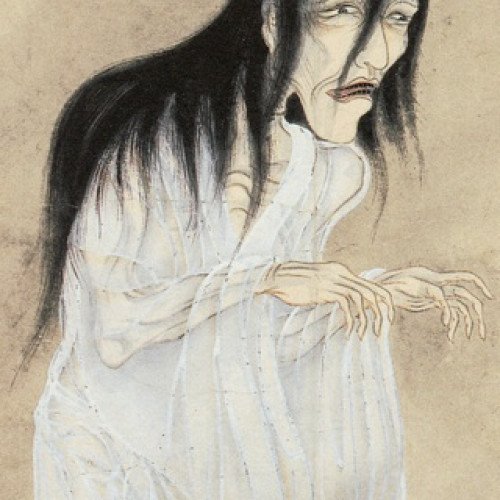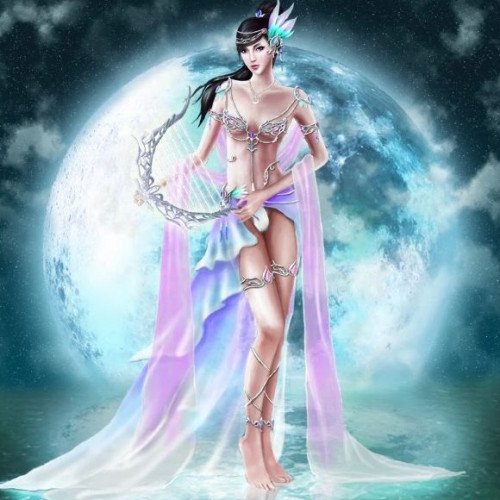Ghost VS Asteria (mythology)

Ghost
In folklore, a ghost is the soul or spirit of a dead person or animal that can appear to the living. In ghostlore, descriptions of ghosts vary widely from an invisible presence to translucent or barely visible wispy shapes, to realistic, lifelike forms. The deliberate attempt to contact the spirit of a deceased person is known as necromancy, or in spiritism as a séance. Other terms associated with it are apparition, haunt, phantom, poltergeist, shade, specter or spectre, spirit, spook, and wraith. The belief in the existence of an afterlife, as well as manifestations of the spirits of the dead, is widespread, dating back to animism or ancestor worship in pre-literate cultures. Certain religious practices—funeral rites, exorcisms, and some practices of spiritualism and ritual magic—are specifically designed to rest the spirits of the dead. Ghosts are generally described as solitary, human-like essences, though stories of ghostly armies and the ghosts of animals rather than humans have also been recounted. They are believed to haunt particular locations, objects, or people they were associated with in life. According to a 2009 study by the Pew Research Center, 18% of Americans say they have seen a ghost.The overwhelming consensus of science is that there is no proof that ghosts exist. Their existence is impossible to falsify, and ghost hunting has been classified as pseudoscience. Despite centuries of investigation, there is no scientific evidence that any location is inhabited by spirits of the dead. Historically, certain toxic and psychoactive plants (such as datura and hyoscyamus niger), whose use has long been associated with necromancy and the underworld, have been shown to contain anticholinergic compounds that are pharmacologically linked to dementia (specifically DLB) as well as histological patterns of neurodegeneration. Recent research has indicated that ghost sightings may be related to degenerative brain diseases such as Alzheimer's disease. Common prescription medication and over-the-counter drugs (such as sleep aids) may also, in rare instances, cause ghost-like hallucinations, particularly zolpidem and diphenhydramine. Older reports linked carbon monoxide poisoning to ghost-like hallucinations.In folklore studies, ghosts fall within the motif index designation E200-E599 ("Ghosts and other revenants").
Statistics for this Xoptio

Asteria (mythology)
In Greek mythology, Asteria (; Ancient Greek: Ἀστερία, "of the stars, starry one") was a name attributed to the following eleven individuals: Asteria, a Titaness. Asteria or Astris, daughter of Helios and Clymene or Ceto, one of the Heliades. She married the river god Hydaspes (the modern Jhelum River) and became mother of Deriades, king in India. Asteria, one of the Danaïdes, daughters of Danaus who, with one exception, murdered their husbands on their wedding nights. She was, briefly, the bride of Chaetus. Asteria, one of the Alkyonides. Along with her sisters, she flung herself into the sea and was transformed into a kingfisher. Asteria, daughter of Hydeus, was the mother of Hydissos by Bellerophon. Her son is known for having founded a city in Caria which was named after him. Asteria, daughter of Coronus, and Apollo were possible parents of the seer Idmon. Asteria or Asterodia, mother of Crisus and Panopeus by Phocus. Asteria, daughter of Teucer and Eune of Cyprus. Asteria, the ninth Amazon killed by Heracles when he came for Hippolyte's girdle. Asteria, an Athenian maiden who was one of the would-be sacrificial victims of Minotaur, portrayed in a vase painting.Christoph Willibald Gluck gave the name Asteria to one of the characters in his 1765 opera Telemaco, though the name did not appear in Homer's Odyssey on which the opera was based.